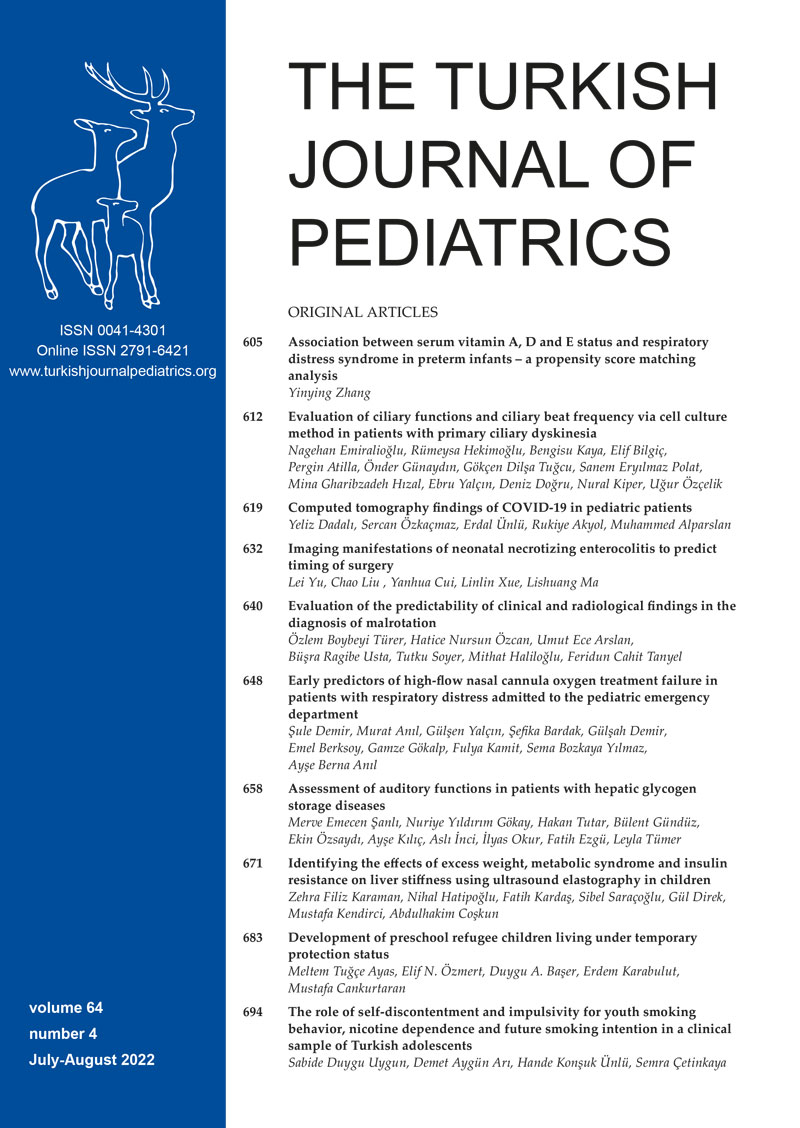Abstract
Background. Despite many treatment approaches, survival rates in high grade glial tumors are still not at the desired level. One of the cause of this failure might be that although having similar histologic features, they may display different biological behaviors depending on molecular heterogeneity.
Case. A 10-year-old girl presented with sudden onset left sided hemiparesis, headache, and ataxia. Physical examination was normal except for left sided hemiparesis and ataxia. A hyperintense mass lesion involving the bilateral thalamus was detected in the axial T2-weighted and coronal FLAIR sequences on brain MRI. There was no enhancement in axial T1-weighted contrast-enhanced sequences. Due to the size and location of the tumor, the patient was considered inoperable. Intensity modulated radiotherapy was intended for curative treatment to the patient because the radiological findings suggested a low-grade glial tumor. Tumor was unresponsive to radiotherapy but biopsy could be performed. The histopathological examination revealed a diffuse glial tumor with increased cellularity, mild nuclear atypia and rare mitosis. Due to the infiltrative pattern of the tumor, it was accepted as a high grade diffuse glial tumor. A chemotherapy protocol including cisplatin and etoposide in the first cycle, vincristine and cyclophosphamide in the second cycle, and carboplatin and vincristine in the third cycle were instituted to the patient. After the third cycle of chemotherapy, the tumor progressed radiologically. H3.1 K27M c.83A > T (HIST1H3C p.Lys28Met), ATRX c.2169_2170del (p.Glu723AspfsTer9), TP53 c.338T > C (p.Phe113Ser), and EGFR c.2300_2308dup (p.Ala767_va1769dup) were detected in the genetic assessment of tumor tissue. The patient`s treatment was changed to vincristine, temozolomide, and irinotecan. Unfortunately, MRI showed progression after three cycles of second-line chemotherapy. The patient`s family refused any further treatment, and the patient died with progressive disease in a short time.
Conclusions. EGFR mutation along with H3.1 K27M mutation is extremely rare in children to our knowledge. It should be kept in mind that if there is a possibility of targeted therapy, there may be a treatment option in this malignant disease with a poor prognosis.
Keywords: EGFR mutation, H3K27M mutation, bithalamic high grade glioma, children
Copyright and license
Copyright © 2022 The Author(s). This is an open access article distributed under the Creative Commons Attribution License (CC BY), which permits unrestricted use, distribution, and reproduction in any medium or format, provided the original work is properly cited.














